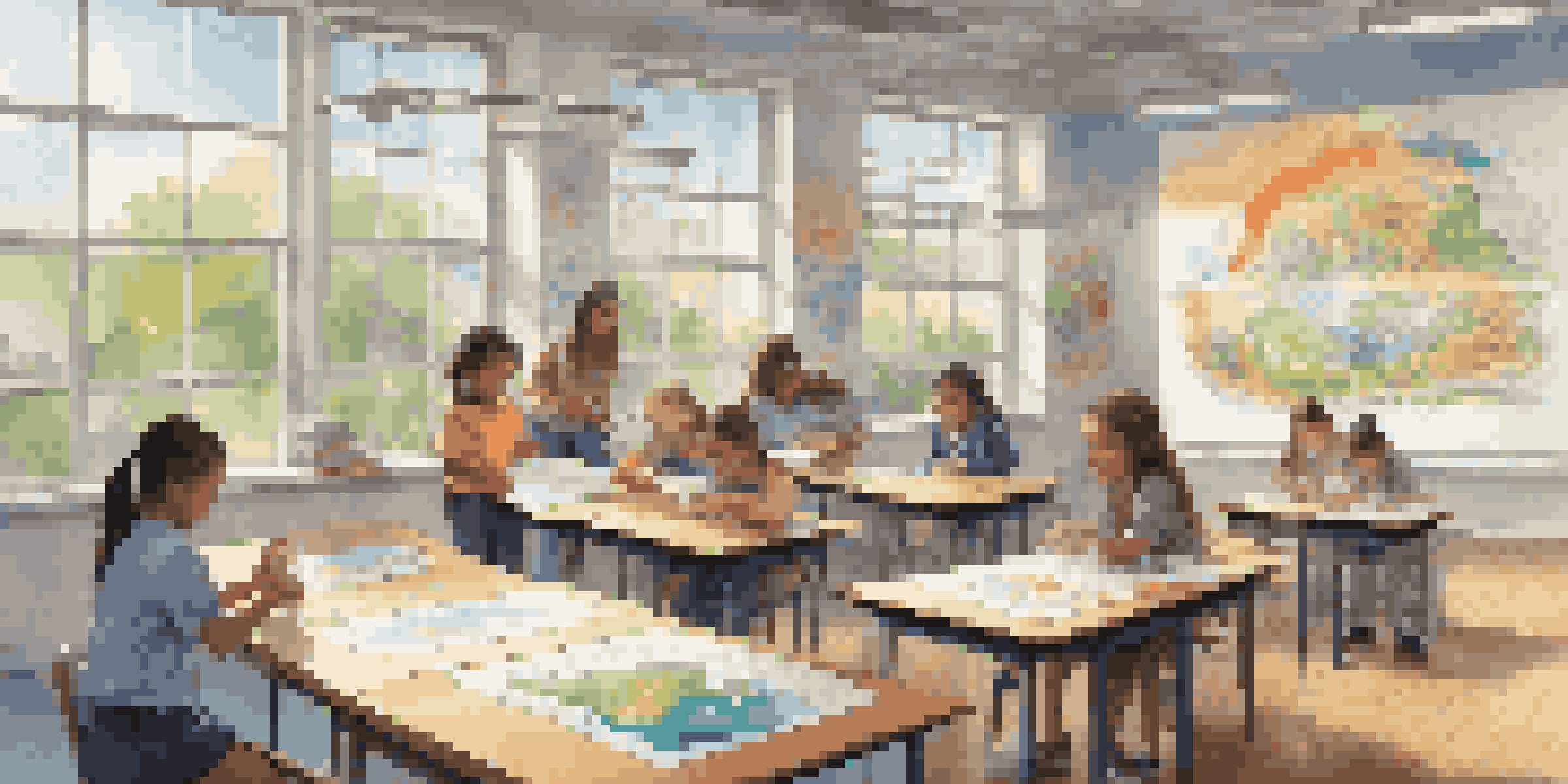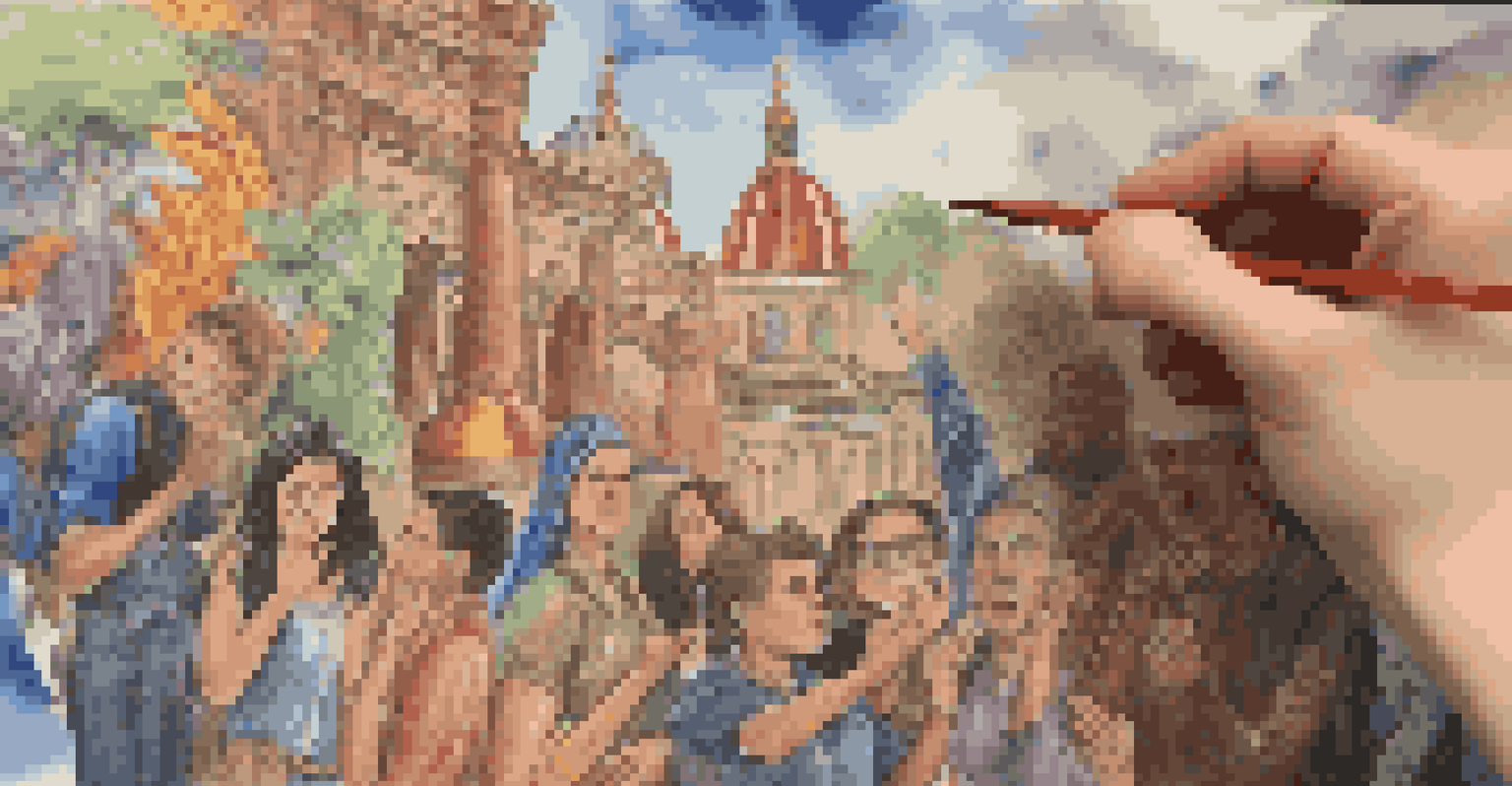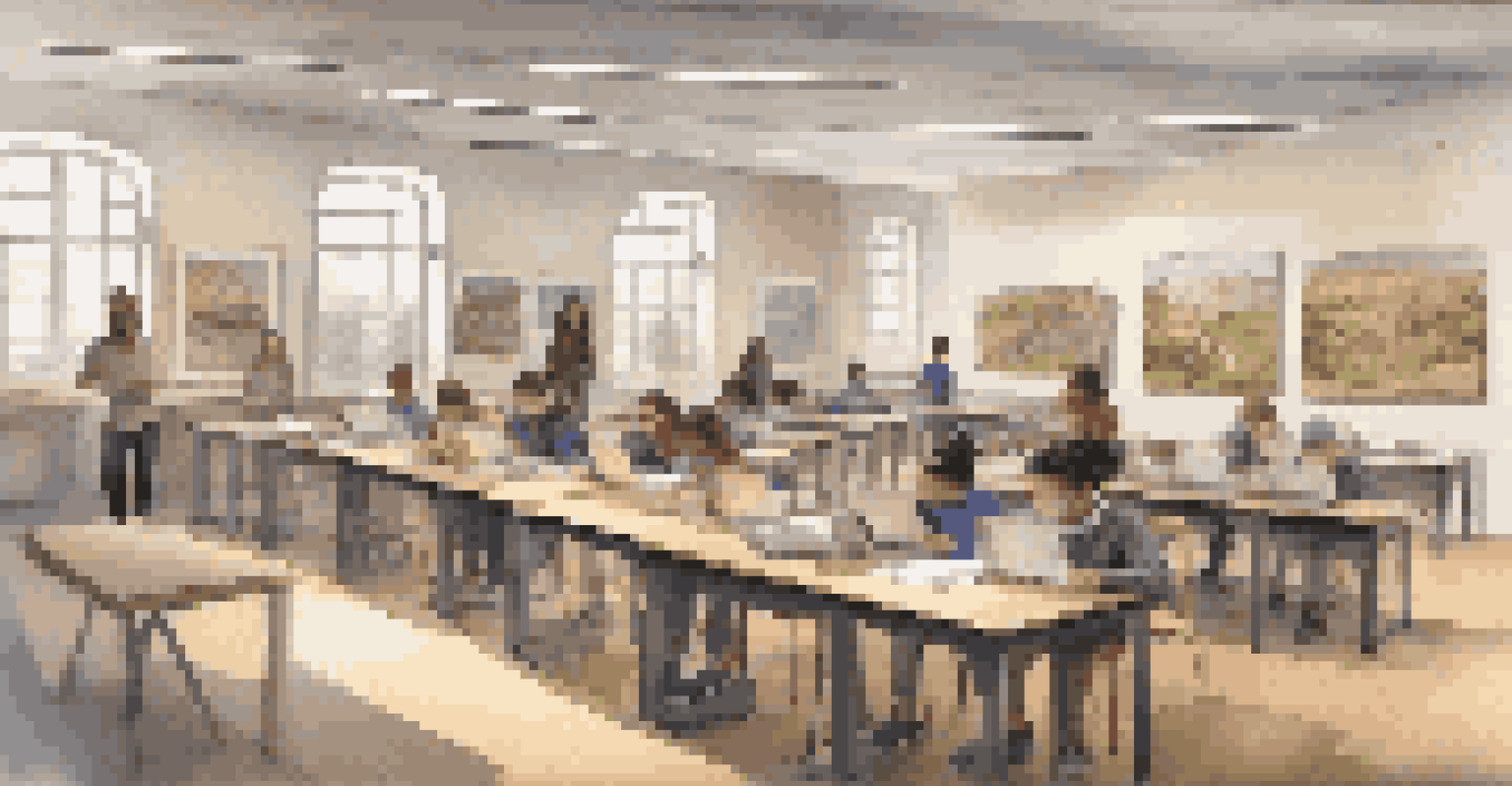Visual Art as a Tool for Memory Retention in Education

The Power of Visual Learning in Education
Visual learning is a method that relies on images, diagrams, and other visual aids to enhance understanding. Research shows that our brains process visual information faster than text, making it a powerful tool in education. By incorporating visual elements into lessons, educators can create a more engaging learning experience that resonates with students.
A picture is worth a thousand words.
For example, think about how easily you remember a colorful infographic compared to a plain text document. That’s because visuals can simplify complex information and make it more relatable. This approach not only captures attention but also aids in long-term memory retention, as our brains naturally gravitate towards images.
In today’s digital age, where attention spans are shorter, visual learning strategies are essential. They can help break down barriers for students who struggle with traditional learning methods, ensuring that all learners have the opportunity to succeed.
Visual Art as a Memory Aid
Visual art serves as a compelling memory aid, allowing students to create personal connections with the material. When learners engage in artistic activities, they often retain information better because they are actively involved in the learning process. This hands-on experience transforms abstract concepts into tangible forms, making them easier to recall later.

Consider a student who draws a diagram to illustrate the water cycle. By creating this visual representation, they not only understand the concept but also have a personal reference point to remember it by. This method of encoding information through art can significantly enhance retention compared to passive reading or listening.
Visual Learning Boosts Engagement
Incorporating visual elements into education enhances understanding and retention by making complex information more relatable.
Moreover, incorporating art into lessons encourages creativity, which can further reinforce memory. When students express ideas through their unique artistic styles, they are more likely to remember the associated concepts, as they have made the learning experience their own.
Emotional Connections and Memory Retention
Art has a unique ability to evoke emotions, which plays a crucial role in memory retention. When students create or interact with visual art, they often experience feelings that can anchor their memories more firmly. This emotional connection makes the content more memorable and helps it stick in their minds long after the lesson ends.
Art is the most beautiful of all lies; it is the truth that is hidden within the depths of our emotions.
Imagine a history class where students create a mural depicting a significant event. The emotions stirred during this creative process can create lasting impressions, making it easier for them to recall details about that event in the future. This emotional engagement adds depth to their learning experience.
Incorporating art into education not only enhances memory but also fosters a deeper understanding of the subject matter. When learners can relate emotionally to what they are studying, they are more likely to internalize and remember the information.
Art Integration in Curriculums
Integrating art across various subjects can amplify memory retention and learning engagement. Instead of isolating art as a standalone subject, educators can weave it into science, math, or literature lessons. This cross-disciplinary approach not only enriches the learning experience but also reinforces concepts through multiple lenses.
For instance, in a science class, students could create visual models of ecosystems, allowing them to explore complex relationships in nature. This hands-on application helps solidify their understanding while making the process enjoyable. The more connections students can make, the better they retain information.
Art Enhances Memory Retention
Engaging in visual art creates emotional connections that significantly improve students' ability to remember and internalize concepts.
Additionally, this integration promotes collaboration among students, enhancing their social skills. By working together on artistic projects, they learn to communicate ideas and support one another, which can further reinforce the material they are studying.
Cognitive Benefits of Visual Art
Engaging with visual art can boost cognitive functions crucial for memory retention. Activities like drawing, painting, or sculpting stimulate various parts of the brain, enhancing problem-solving and critical thinking skills. These cognitive benefits can translate into improved academic performance across the board.
For example, when students tackle a challenging art project, they learn to think creatively and adaptively. This mindset can help them approach their studies with a new perspective, making it easier to retain complex information. As they develop these skills, their overall capacity for learning expands.
Furthermore, art encourages mindfulness, allowing students to focus their attention and reduce anxiety. This calm state can create a more conducive environment for learning, enabling students to absorb and retain information more effectively.
Challenges of Implementing Visual Art
Despite the clear benefits, integrating visual art into education can present challenges. Some educators may feel unprepared to teach art or may lack the resources to implement such programs effectively. These barriers can prevent the full advantages of visual art from being realized in the classroom.
For example, a teacher might want to incorporate art but feels constrained by curriculum guidelines or time limitations. This can lead to missed opportunities for students to engage with the material creatively. To overcome these challenges, schools could provide professional development for teachers and allocate time for creative projects within existing curriculums.
Integrating Art Across Subjects
Weaving art into various subjects promotes collaboration and reinforces learning by allowing students to explore concepts through creative expression.
Ultimately, addressing these challenges requires a shared commitment among educators, administrators, and policymakers. By advocating for the inclusion of art in education, we can pave the way for more engaging and effective learning experiences.
Future Directions for Visual Art in Education
Looking ahead, the role of visual art in education is poised to expand further. As technology continues to evolve, new platforms and tools are emerging that can enhance the integration of art into learning. Virtual reality, digital art programs, and interactive apps are just a few examples of how technology is reshaping educational landscapes.
These innovations provide exciting opportunities for students to engage with content in ways that were previously unimaginable. Imagine a student creating a 3D model of a historical site using virtual reality technology. This immersive experience not only makes learning more engaging but also aids in memory retention.

As we embrace these advancements, it’s essential to maintain a balance between traditional teaching methods and innovative approaches. By recognizing the value of visual art and its potential to enhance memory retention, we can create a more holistic educational experience for future generations.